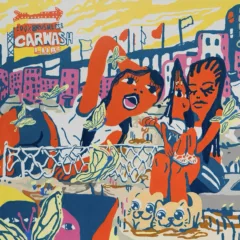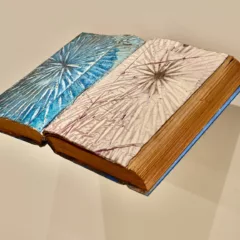Author’s introduction
I am an adjunct in the Painting Department at Tyler School of Art & Architecture at Temple University, where I came across Molly Burt-Westvig’s work. She is a first year Graduate student, and was assigned to be my (first!) TA just before the TUGSA strike. Since I was not allowed to support or encourage the strike, I wanted to do something that helped give the Grads positive visibility during this tough time. We had some great conversations in the classroom that I wanted to keep alive once the strike began. We had an in person studio visit, and continued the conversation in writing.
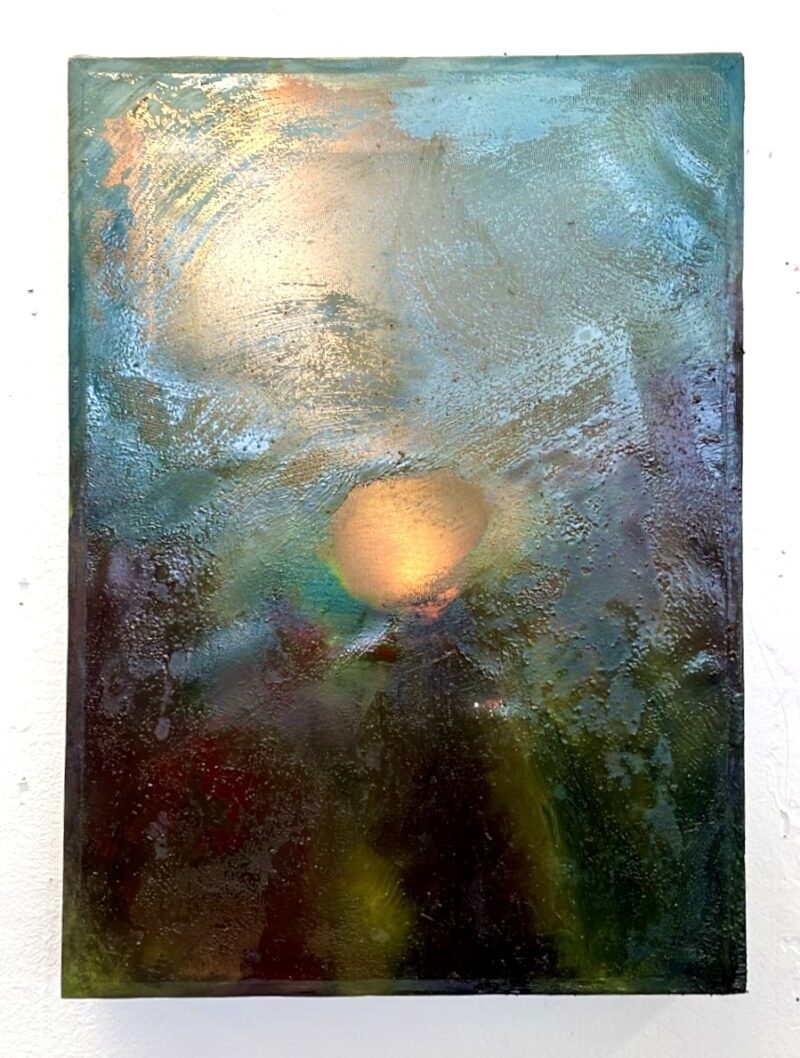
Lauren Whearty: Molly, Can you introduce yourself and say what drew you to Tyler and Philly?
Molly Burt-Westvig: I went to school in the midwest and spent several years afterwards as a kind of satellite, bouncing between miscellaneous jobs and generous residency opportunities. This time challenged me and kept my practice energized, ensuring my studio practice was always a priority during what was, a pretty significant gap before coming for my MFA at Tyler. Although I value that time so much, I wanted to feel more grounded and find a consistent community of artists somewhere where I could live a creative life. Philadelphia’s relatively low cost of living and growing number of artist-run spaces inspires a kind of possibility, accessibility and community most cities lack. I was living in Leipzig, Germany, right before school, which felt similar to Philadelphia in terms of having a vibrant arts community and a lot of space and easy access to a major arts capital, Berlin. I think I felt a kinship in the kinds of city-scapes as well coming to Philly.
Lauren: The subject of your work is often a place that you have had an experience with. Can you talk a bit about how perceptions of place inform your work, and what kind of experience you may want the viewer to have?
Molly: I want my viewer to feel present, as if experiencing some phenomena or event. I use material to “speed up” or “slow down” an image, pulling the viewer in or pushing back with juicy moments or physical distortion. This complicates the viewer/object relationship to create the feeling of space shifting rather than as a detached spectator, granting the painting an agency and intimacy. I’ve found myself influenced by the “quick-scan” of the city and how much that mediates my experience of the place, thinking about how our eyes track in space and what we take in or miss.
Lauren: I love the way you are speaking about an embodied experience–we see both physically and visually, which we can’t fully experience while scrolling through instagram, or our camera roll. I see the invention of photography as both a time of liberation for painting, and a technology that painting is often in dialog with. Since your imagery often comes from photographic sources–whether that is a photo printed on fabric, or layers of materials that are scanned, I wonder if you could expand on that relationship between technology and painting/art or between the digital and physical?
Molly: I started using photography as a notation within my work, it felt a bit cheeky to physically embed a source image into a painting. I felt like I was breaking the rules by using multiples and iterations to distort the experience of the image. Straddling the flat precision of a digital image and the intimacy and energy of painting I’ve found to be an interesting space to unpack the complexity of embodied experience. Through a deeper investigation of photography as a tool I’ve been expanding how I make images. Recently I’ve been using a scanner in my work after realizing the motion of the scanner is the same as the “city scan” our eyes perform. Embedding this into my process of making feeds back into the subject of my work while allowing me to collage and compose the space of the scanner bed with props, tools, veils and other techniques which are ways of composing more traditional to painting.
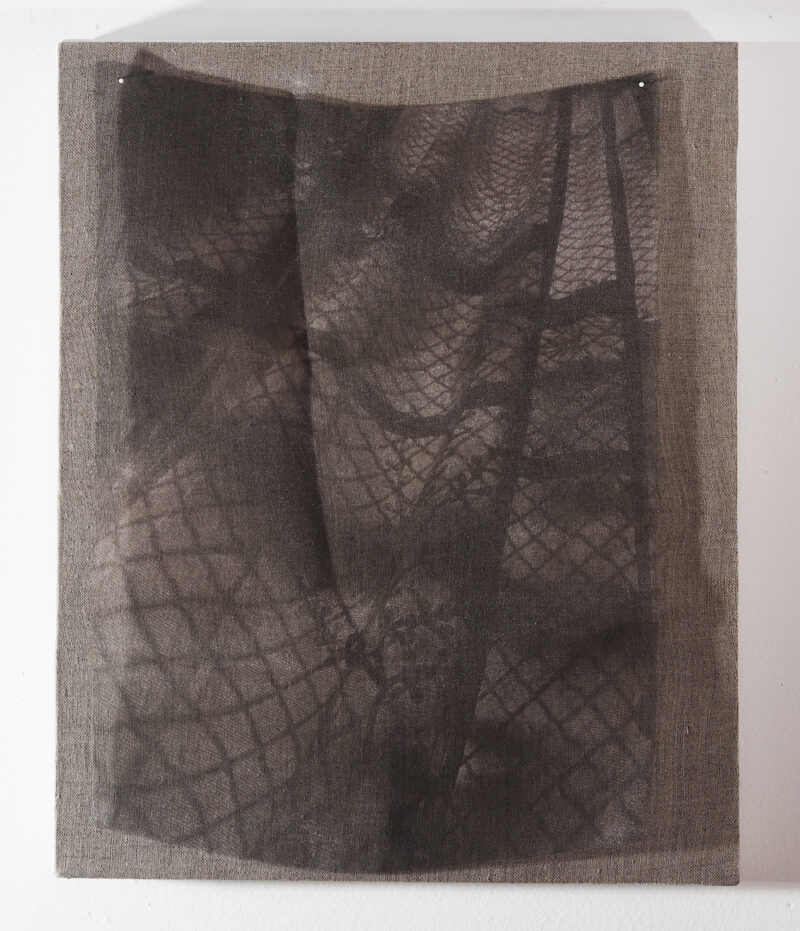
There’s a common language between the physical distortion of my materials and the digital glitch, the topic of embodied experience and intimacy is important to investigate in this moment where the pandemic has pushed us beyond double-vision, where for many of us, more experiences happen online than off. I sometimes feel like I’m wrestling a love and knowledge of painting against the culture of images experienced through screens. Surface, structure, form all become moments to make something experiential beyond image which drives my practice. Although the digital holds the infinite, more and more I see the value of limitation. Thinking of “rules” within a creative practice as a place of specificity and invention. Knowing you have so much and choosing to pare back, through a material specificity, a technique, research or attitude, making decisions becomes generative.
Lauren: There’s a special moment of reveal in your works–there’s often a moment when the viewer realizes something different or new about the piece. For example, in, “I Only Tell Ghost Stories,” I didn’t notice that the image was a gauzy free flowing layer until I was about a yard from the piece and could see the fabric moving. Can you talk a bit about how you make these decisions in your work? I’m particularly curious about how you decide why or when a work should include this kind of movement, or if each work has its own particular type of “reveal,” like “No Horizon”’s inclusion of a hole and LED.
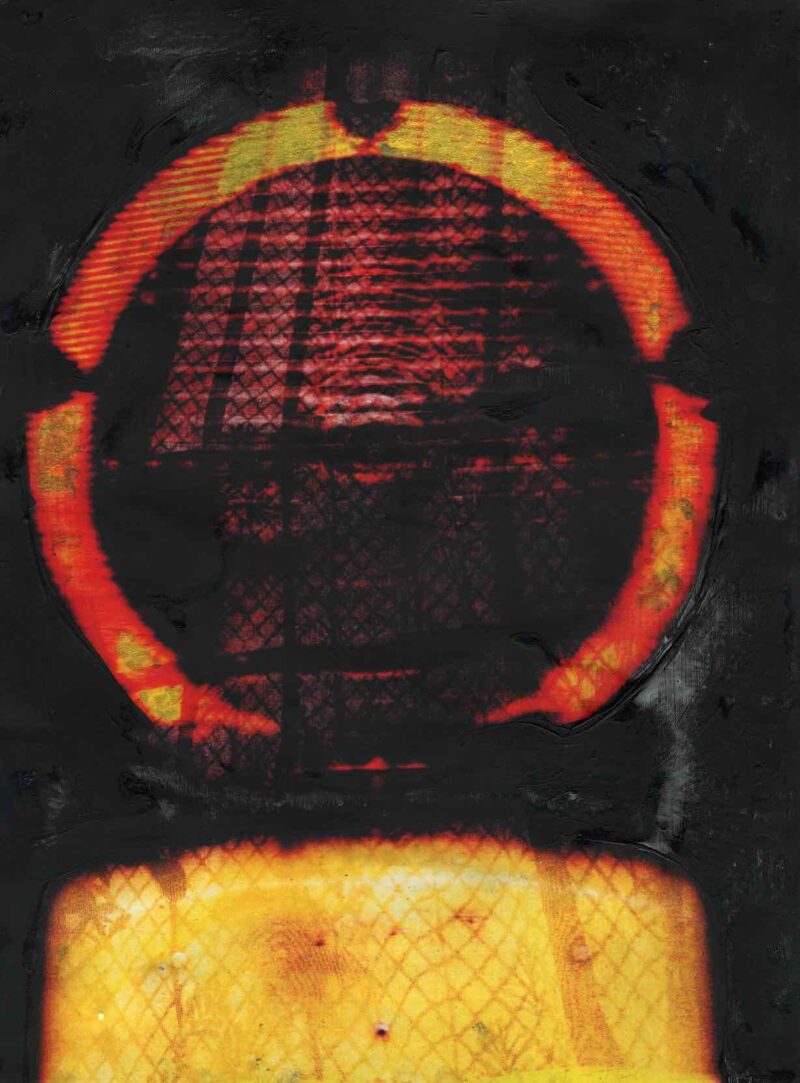
Molly: In the works you mention, the absence of something expected becomes as activated as a material, you expect a painting and get a shadow, you look for a sun but instead see through to the wall. The surprise in those moments rewards the slow-look, creating a moment of presence as the painting is caught in a reveal. There is usually a moment like this in my work because I’m interested in painting’s illusory space and objecthood, but it happens in different registers—image-dense paintings demand more subtle moments, like how “Denouement” has a slight sparkle from ground up glass, or how “Rain Does Not Wash Everything Away” appears to emit light through reflectors veiled in landscaping Tyvek. I’m interested in the different levels of looking, how to pull a viewer in with a photographic image and hold them through the transformative space of painting. I want my viewer to witness a phenomena of materiality and find that space for pause, when I succeed, I think of the reveal as a portal.
Lauren: How do you get to that synergy of the marriage of material and effect or experience? For example, I think some artists find their ideas through a material process, and some have this idea or effect in mind first.
Molly: There are a handful of materials I work with regularly: foil blankets, printed textile, vinyl, and glass are all pretty central to my practice. I began working with each at different times, slowly folding each in because it answered a question I was asking in my practice about space, light and distortion, building a material knowledge to engage something more conceptual. The optical qualities of materials can be active or quiet, balancing the material and image is where the psychological content builds in the work. In the process of making, I collect materials together that feel embedded with similar content so I can freely investigate and collage objects and images in space. Sometimes a material is an answer—creating a moment of embodied experience within an image of the site. These archives of real and imagined sites and their corresponding materials let me work intuitively within a specified range. The moment of being completely absorbed in the act of making is so important to me, it’s the intuitive moves that become so alive.
Lauren: It’s been such a privilege to learn more about your work in this way. Is there anything you’d like to mention about what is coming up for you? This could either be about where you are excited to push your work as you move forward, or any upcoming professional opportunities?
Molly: Thank you very much for the insightful questions and chat, it’s been great to talk about my practice with you. I’m looking forward to seeing my peer’s thesis exhibitions which are beginning and will run through spring, as well as celebrating the ratification of TUGSA’s new collective bargaining agreement. I’ve been investigating the scale and presence of gestures within my work to see where I want to dig deeper for my thesis year, but it’s the busiest part of the semester right now, so I can’t help but be excited for the dedicated studio time this summer.
For more information on Molly Burt-Westvig see the artist’s website.




